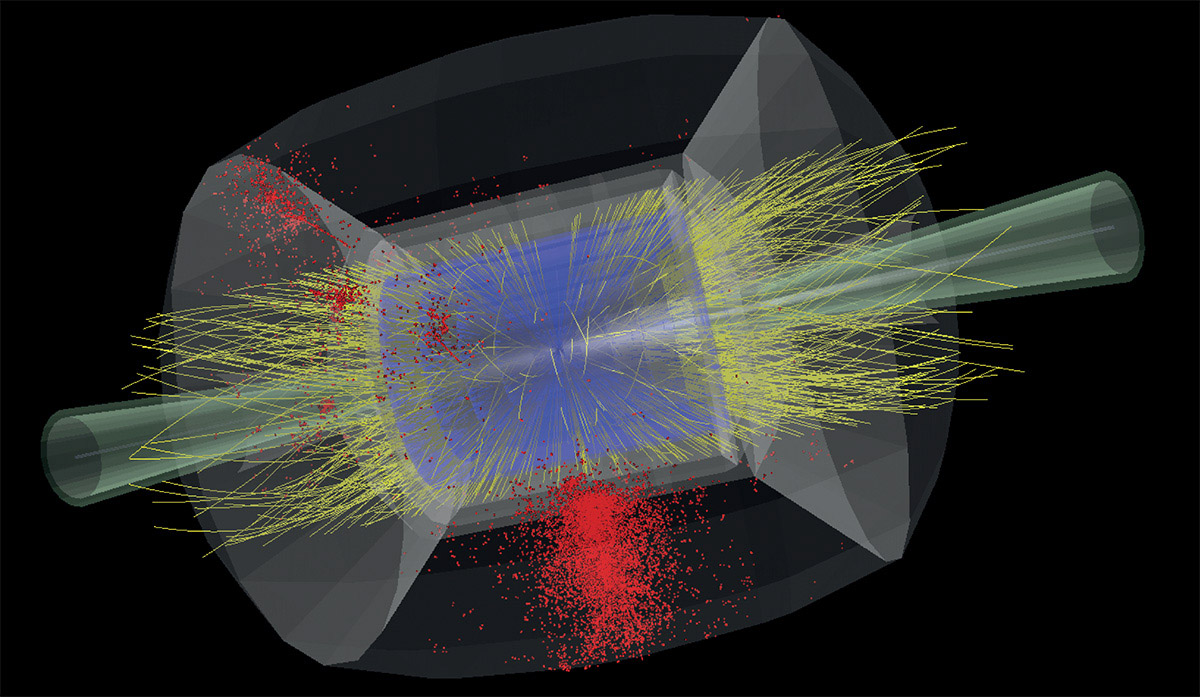Not everyone is fully on board. Some theorists worry that the approach will only yield more false alarms from the collider—more tentative blips in the data like “two-sigma bumps,” so named for their low level of statistical certainty. These are generally flukes that eventually disappear with more data and analysis. Koren is concerned that this will be even more the case with such an open-ended technique: “It seems they want to have a machine that finds more two-sigma bumps at the LHC.”
Nachman told me that he received a lot of pushback; he says one senior physicist told him, “If you don’t have a particular model in mind, you’re not doing physics.” Searches based on specific models, he says, have been amazingly productive—he points to the discovery of the Higgs boson as a prime example—but they don’t have to be the end of the story. “Let the data speak for themselves,” he says.
Building bigger machines
One thing particle physicists would really like in the future is more precision. The problem with protons is that each one is actually a bundle of quarks. Smashing them together is like a subatomic food fight. Ramming indivisible particles like electrons (and their antiparticles, positrons) into one another results in much cleaner collisions, like the ones that take place on a pool table. Without the mess, researchers can make far more precise measurements of particles like the Higgs.
An electron-positron collider would produce so many Higgs bosons so cleanly that it’s often referred to as a “Higgs factory.” But there are currently no electron-positron colliders that have anywhere near the energies needed to probe the Higgs. One possibility on the horizon is the Future Circular Collider (FCC). It would require digging an underground ring with a circumference of 55 miles (90 kilometers)—three times the size of the LHC—in Switzerland. That work would likely cost tens of billions of dollars, and the collider would not turn on until nearly 2050. There are two other proposals for nearer-term electron-positron colliders in China and Japan, but geopolitics and budgetary issues, respectively, make them less appealing prospects.

D. LUCCHESI ET AL.
Physicists would also like to go to higher energies. “The strategy has literally never failed us,” Homiller says. “Every time we’ve gone to higher energy, we’ve discovered some new layer of nature.” It will be nearly impossible to do so with electrons; because they have such a low mass, they radiate away about a trillion times more energy than protons every time they loop around a collider. But under CERN’s plan, the FCC tunnel could be repurposed to collide protons at energies eight times what’s possible in the LHC—about 50 years from now. “It’s completely scientifically sound and great,” Homiller says. “I think that CERN should do it.”
Could we get to higher energies faster? In December, the alliteratively named Particle Physics Project Prioritization Panel (P5) put forward a vision for the near future of the field. In addition to addressing urgent priorities like continued funding for the HL-LHC upgrade and plans for telescopes to study the cosmos, P5 also recommended pursuing a “muon shot”—an ambitious plan to develop technology to collide muons.
The idea of a muon collider has tantalized physicists because of its potential to combine both high energies and—since the particles are indivisible—clean collisions. It seemed well out of reach until recently; muons decay in just 2.2 microseconds, which makes them extremely hard to work with. Over the past decade, however, researchers have made strides, showing that, among other things, it should be possible to manage the roiling cloud of energy caused by decaying muons as they’re accelerated around the machine. Advocates of a muon collider also tout its smaller size (10 miles), its faster timeline (optimistically, as early as 2045), and the possibility of a US site (specifically, Fermi National Laboratory, about 50 miles west of Chicago).
There are plenty of caveats: a muon collider still faces serious technical, financial, and political hurdles—and even if it is built, there is no guarantee it will discover hidden particles. But especially for younger physicists, the panel’s endorsement of muon collider R&D is more than just a policy recommendation; it is a bet on their future. “This is exactly what we were hoping for,” Homiller says. “This opens a pathway to having this exciting, totally different frontier of particle physics in the US.” It’s a frontier he and others are keen to explore.
Dan Garisto is a freelance physics journalist based in New York City.
#hunt #physics #worlds #largest #particle #collider


